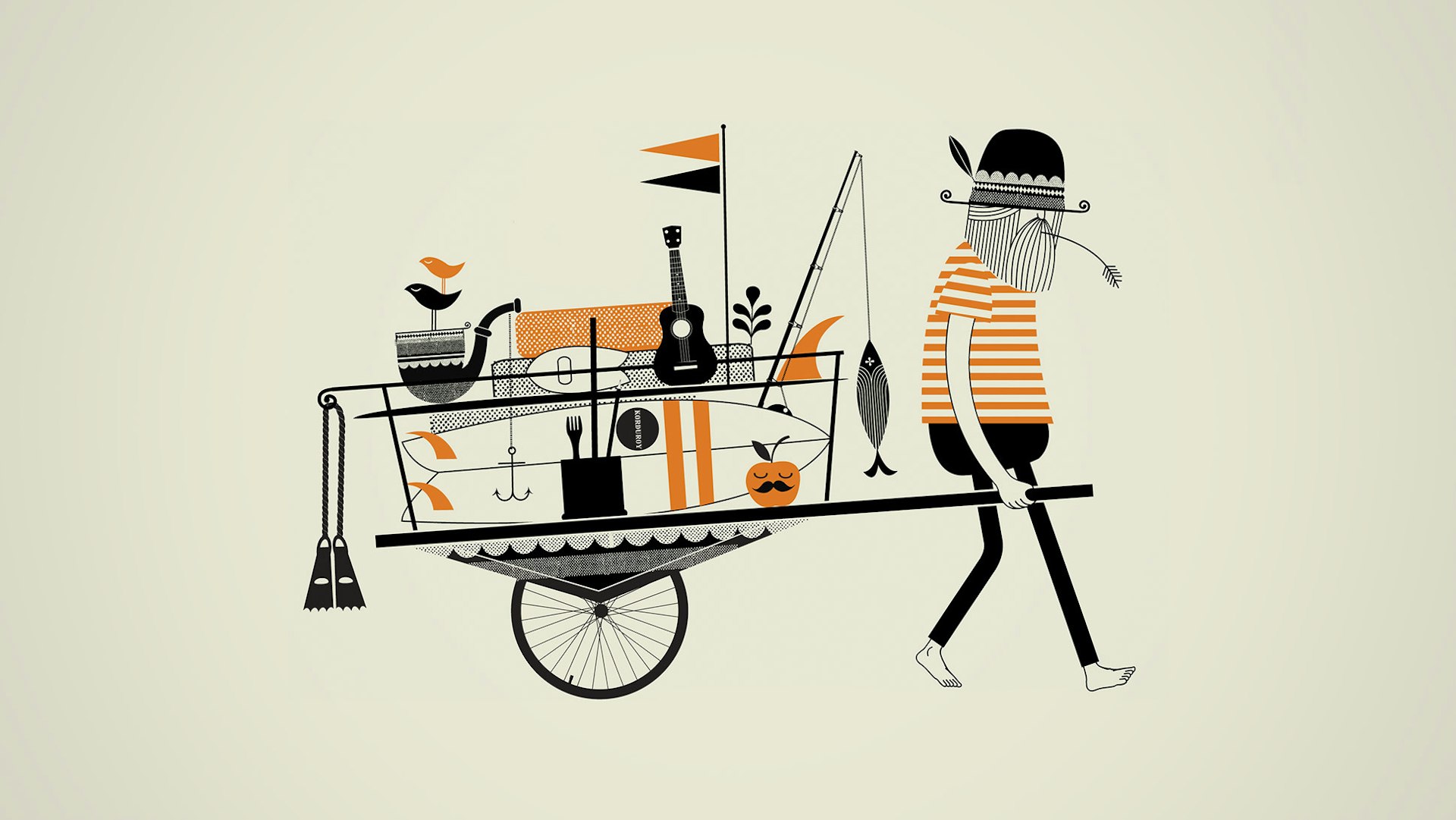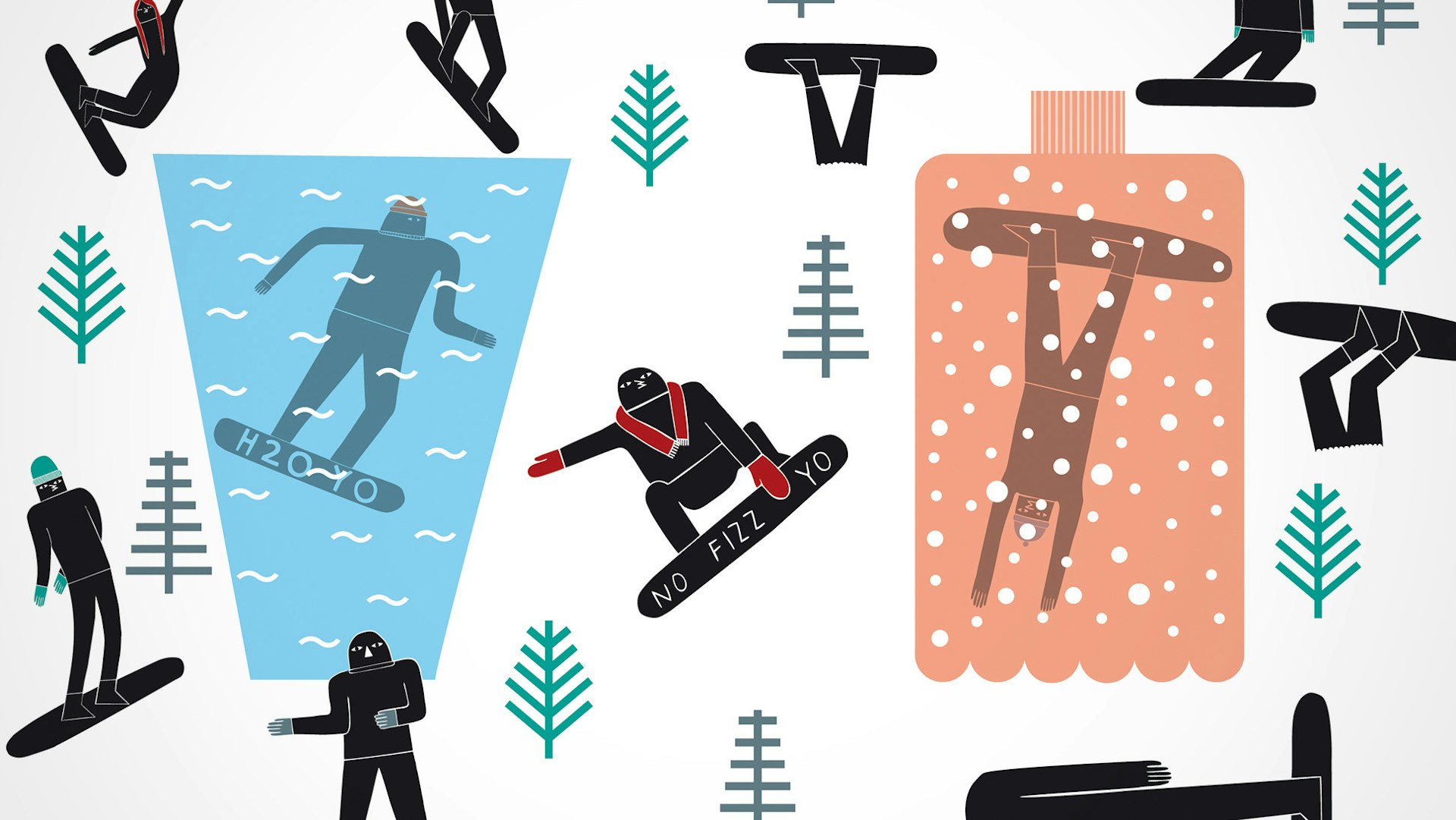
DIY Surf Films
- Text by Chris Nelson
- Illustrations by Adrian Knott/KorduroyTV
The ground is moving beneath our feet. The ‘digital revolution’ – that all-encompassing subterranean shift – is changing the landscape. Every day, as if propelled by a ridge of binary code, an upwelling of moving images spills forth from every laptop, iPhone and tablet screen demanding our attention. Surfing online is not just a metaphor, it seems. Every session is captured instantly and fired around the globe, with every brand packaging their latest expedition as a glossy travelogue of ‘webisodes’ and distributing them, for free, to the masses via social networks. But here’s the thing: with so much surf footage competing for our attention, just how is the independent surf filmmaker going to survive?
Moviemaking used to follow such simple lines: shoot the film; screen it in front of amped crowds. Then came Betamax, VHS, DVD, and the formula changed: stack ’em high in the surf shop; cross your fingers and pray you recoup enough to fund the next project. But what now? The indie producer is faced with a new dilemma – outside the traditional distribution model, how do you monetise your output and stay afloat while shooting in the line-up? “We’re at a crossroads regarding the future of the surf media,” explains Cyrus Sutton, whose prolific output centres around Korduroy.tv and includes award-winning movie Stoked and Broke. “It’s really the corporately backed vs. the independent passion projects.”
For some, this is a brave new world where the medium has been democratised, bringing relatively inexpensive, high-quality equipment into the hands of more creatives. “There is a splintering of genres as never before,” says Tyler Breuer of SMASH Surf, the collective promoting surf culture nights in New York. “Technology has levelled the playing field, giving all surfers an opportunity to be a filmmaker. Ten to fifteen years ago, only a handful of people could afford to make and distribute films. For the most part, these looked and felt the same. Now, you can find incredible surf documentaries, short narratives, comedy, surf porn, films with a cause, the avant-garde… The list goes on. But also, we are seeing more brand-made films. They are going to be the most technical and high-performance out there because they have the financial backing. They are not concerned with turning a profit on those films. They want to get the exposure and market themselves.”
But just because a brand gets involved, does that mean the process is compromised? “I see the lines get blurred as surf companies embrace the lifestyle aspect of surfing and fund more and more artists,” explains Cyrus. “It all comes back to each artist calibrating their internal compass and not letting the affiliation with companies affect the integrity of their work, regardless of where it’s coming from.”
Cyrus is a perfect example of this. Although he has just penned a deal with Reef, he remains an independent. When looking to fund Korduroy.tv – a site that has become a platform for free-thinking creatives – he turned not to traditional advertising or sponsorship but to crowd-funding via Kickstarter. Surpassing his goal, it’s clear that financing has become fluid. “I think there will always be a place for media that serves no commercial agenda,” he explains.
For the majority of independents, their driving force remains the story – and a desire to tell it. Narrative is still king. Pierce Michael Kavanagh’s film Manufacturing Stoke asked many questions of the surf industry. “I love surfing, and always will, but the industry is out of control,” he explains. “A toxic $7 billion dollar a year industry telling us what it means to be surfers? That’s a fucking joke. Surfers should control the industry, not the other way around. I wantedManufacturing Stoke to inspire, to be a wake-up call and to highlight individuals that are striving to take their surf industry back in a more responsible manner. It’s up to us to demand the change that we want to see.”
But what about making sure your project doesn’t sink you financially? “You have to hustle to make it happen,” Pierce explains. “My wife and I put up all the money. It cost us $9,000 for a film that should have cost ten times as much. I called in every favour from every friend I had. The support we received was overwhelming because people believed in the message. It renewed my hope. I’m an independent filmmaker. I’m in this for the love of surfing and cinema.”
Like the music industry, which suffered these pains first, the solution seems two-fold: embrace the digital as well as the tangible experience. Outlets for downloading and streaming content like thesurfnetwork.com are offering a monetised lifeline to the filmmaker, while the growth in popularity of surf film festivals playing to packed houses in New York, London, San Sebastian and beyond, demonstrates the desire we have to engage with the offline movie experience – and with each other.
“There is an increasing appetite for people to connect and feel a part of something,” explains Tyler. “We live in a world that is becoming more isolated in terms of human interactions. We buy our stuff online instead of going to a store. We watch movies on our computers. We’ve cut ourselves off. We need to get that connection and surf movies are a great way for us to come together on a more human level.”
Last year’s outstanding film on the festival circuit, Come Hell or High Water, was an independent production made with the backing of two surf brands. Shot on 35mm this was an artistic endeavour that focused on a marginalised, uncommercialised section of the waveriding world: bodysurfing. And there wasn’t a board logo in sight. Now, that, if anything is a sign of hope.
